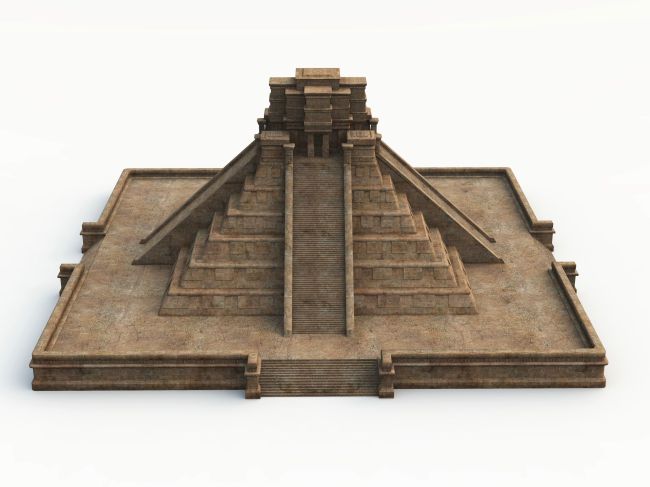
Scientists say they‘ve seen clues to the reason for the rapid decline of the Maya civilization that once occupied much of modern-day Mexico and Central America.
The Mayan civilization, known for its sophisticated calendar system and pyramid construction, sprang up in 300 A.D. but seemed to collapse between 800 and 1000 A.D.
A study published in the Journal Science suggests the Maya civilization perished from the effects of extreme changes in climate.
Unusual rainfall patterns doomed the Maya people, says palaeoclimatologist Douglas Kennett of Pennsylvania State University, who along with colleagues studied a 2,000-year-old stalagmite from a cave in southern Belize to reconstruct rainfall records from the geographic center of the Mayan territory.
The researchers determined historical rainfall patterns in the Mayan lowlands by measuring oxygen isotopes incorporated into the stalagmite from rainwater that seeped into the cave from above, Nature reported.
Unusually high rainfall allowed a population boom between 440 and 660 A.D., but subsequent dry conditions between 660 and 1000 A.D. aligns with known periods of political instability in the Mayan civilization, Kennett theorizes. (UPI)
<한글 기사>
마야문명의 멸망원인 찾았다
고대 멕시코 및 과테말라를 중심으로 번성한 마야문명의 멸망원인은 가뭄 때문이라는 연구 결과가 나왔다.
달력과 피라미드 등의 발달된 문화와 기술을 자랑하던 마야 문명은 300년 경 발생해, 800년에서 1000년 사이 멸망했다.
과학 저널에 기제된 연구에 의하면 마야문명은 기후변화의 영향에 의해 사라졌으며 가뭄이 지속되자 멸망에 이르게 됐다고 펜실베니아 주립대학의 지질기후학자 더글라스 케넷(Douglas Kennett) 이 말했다.
그는 다른 연구진들과 함께 당시 마야문명의 중심지의 강우량을 알아보기 위해 마야문명의발상지인 멕시코 일대의 동굴에서 수집한 석순에서 강수량 데이터를 분석했다,
440년부터 660년까지의 높은 강우량은 인구증가에 기여했지만, 그 후 660년과 1000년 사이의 가뭄은 마야운명의 정치적 불안정한 시기와 맞물린다고 케넷은 말했다.





![[Herald Interview] Mom’s Touch seeks to replicate success in Japan](http://res.heraldm.com/phpwas/restmb_idxmake.php?idx=644&simg=/content/image/2024/04/29/20240429050568_0.jpg&u=)


![[News Focus] Lee tells Yoon that he has governed without political dialogue](http://res.heraldm.com/phpwas/restmb_idxmake.php?idx=644&simg=/content/image/2024/04/29/20240429050696_0.jpg&u=20240429210658)









![[Today’s K-pop] Seventeen sets sales record with best-of album](http://res.heraldm.com/phpwas/restmb_idxmake.php?idx=642&simg=/content/image/2024/04/30/20240430050818_0.jpg&u=)